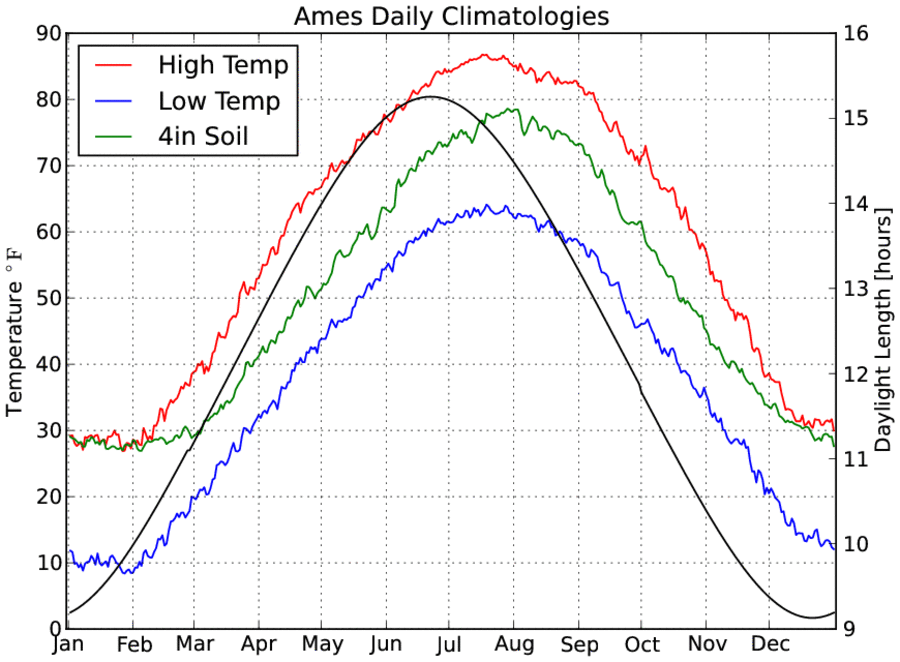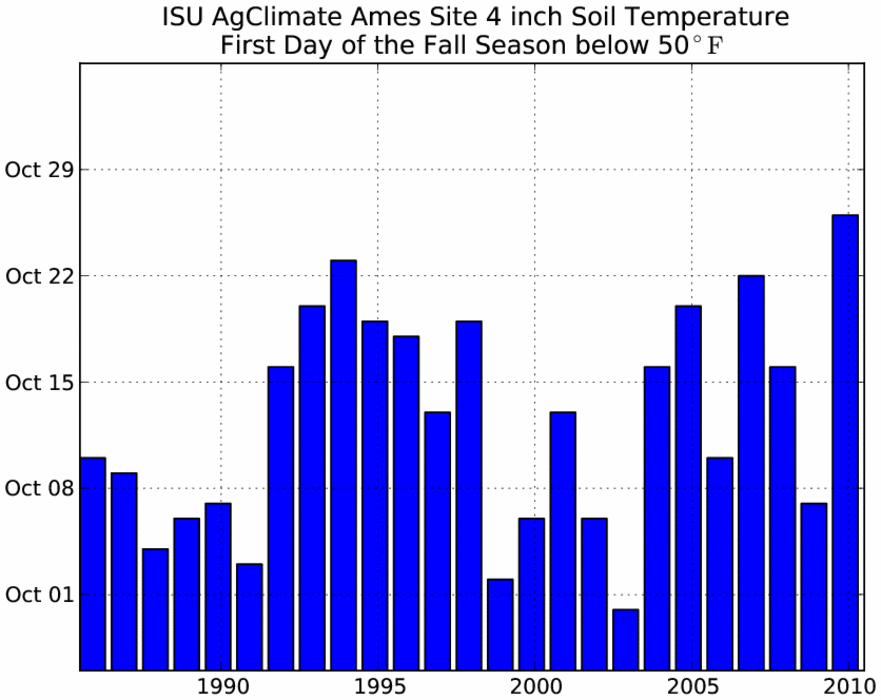Past IEM Features tagged: soil
Warming Impact of Snow
18 Jan 2024 05:30 AMWhen considering the impacts of snow, the first thing you think of is not likely warming. For the near surface soil, the impact is often warming as illustrated by today's featured chart. The chart presents a time series of soil temperature at depth from an ISU Soil Moisture Network site near Ames. While this chart does not present snow information, the impact of the introduction of snow cover last week is readily apparent with the immediate cessation of temperature variability. How can it be that soil temperatures warmed with frozen snow over top the ground? Snow cover acts like a blanket to prevent most soil heat from escaping into the air, so warmth at deeper depths is able to warm shallower depths. The chart does show cooling though on the 14th when bitterly cold air temperatures allowed the snow to drop in temperature as well, which overwhelmed any positive warming that was previously happening when the snow was at a higher (but still below freezing temperature). The slightly warmer air temperatures on Wednesday can be seen at the tail end of this plot as again, snow temperatures warmed as well. The presence of snow cover is critical during periods of extreme cold air temperatures in Iowa as plants, pathogens, and other soil residents that perhaps are killed at extreme cold temperatures are saved by the mitigating impacts of the snow cover.
Voting:
Good: 17
Bad: 0
Abstain: 1
Tags: snowcover soil
Daily Four Inch Soil Range
16 Apr 2019 05:34 AMSoil temperatures are closely watched this time of year to help with agricultural and gardening activities. The featured chart presents the daily range in four inch depth soil temperature from the ISU Horticulture Farm just north of Ames. The chart shows the daily range (bar) and average value (starred). The chart begins with a frozen soil condition and shows the nice warm-up that happened two weeks ago. This warm up was proceeded by cooler weather and so temperatures dropped back down. The pattern shown on this chart is typical of April in Iowa. Periods whereby the top soil is warm enough for planting most crops is limited during early April and often any warm periods are followed by colder periods.
Voting:
Good: 11
Bad: 1
Tags: soil
Soil Periods
29 Apr 2016 05:34 AMUsing hourly soil temperature observations, the featured chart looks at periods of having the temperature above 50 degrees for 48+ straight hours for the first time each spring season and any subsequent periods below 50 for that same year. The featured chart is for Nashua (near Waterloo, Iowa). Having the soil cool back below 50 degrees after its first long stretch above is typical. The prolonged cool stretches are not desirable for crops that are already in the ground. The forecast has a return of warmer weather next week, so hopefully our current stretch of cool soils will reverse soon.
Voting:
Good: 9
Bad: 0
Abstain: 1
Tags: soil
Annual cycles
22 Dec 2011 05:57 AMThe day with the least amount of daylight is also the start of the winter season. This at first may seem counter-intuitive as the sun is the energy source for heating the ground which then heats the air. We have about another month yet to go before we see the coldest average air temperatures as shown by the featured chart presenting the daily climatologies of air and soil temperatures along with daylight length. You can see that none of these curves exactly line up with their maximums and minimums shifted in time slightly.
Voting:
Good: 24
Bad: 5
Tags: daily climate soil daylight
50 degree soils
29 Oct 2010 05:53 AMOur mostly sunny and mild October has helped keep 4 inch depth soil temperatures well above 50 degrees which is a key threshold used for fall nitrogen application in fields (temperatures need to be colder than 50 to make the application successful). Our recent stretch of cool weather has allowed temperatures to dip below 50 for the first time this fall and as is shown in the featured chart, this makes for the latest date in the fall season for the first sub 50 degree to have occured based on our data back to the mid 80s.
Voting:
Good: 59
Bad: 14
Tags: soil 2010





